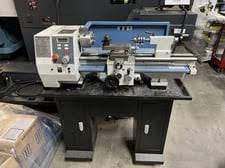The One Thing To Do For Circuit Breakers

Circuit breakers are found in everything from our homes to electric vehicle grids. They are man made, and just like anything else they have their limits and can fail.
When wires try to carry more current than they’re designed for, things start heating up and the insulation can degrade or melt. The breaker senses this, trips, and the power is cut.
They break the flow of electricity
Electrical wiring must be safe and the circuit breakers are one of the most important parts in making that happen. They prevent devices – like your coffee maker -and homes from overheating and potentially becoming a fire hazard.
The circuit breakers are sized to be able to handle the maximum load of each circuit wire and to trip or blow before the wires reach dangerous temperatures. The breaker’s trip mechanism uses either thermal or electromagnetic protection. In the case of thermal protection, heat builds up in a bimetallic strip that bends when current rises past the circuit breakers ampere rating. This moves the switch linkage, breaking the connection between the moving and stationary contacts, which breaks the flow of electricity. In addition, the arc produced by opening electrical contacts can create conductive ionized air and molten or vaporized metal. These hazards can be reduced or eliminated by various arc-extinguishing methods used in low and medium voltage breakers.
They prevent fires
Circuit breakers prevent fires by detecting electrical faults and shutting off the flow of electricity. They detect and interrupt short circuits and ground faults, which can cause arcing and sparks that lead to fires. They also protect against overloading by keeping the amount of current within safe limits.
If too much current flows through a circuit, the breaker will trip, cutting off power to the device or outlet. This prevents overheating that can lead to a fire. In addition, breakers are reusable, unlike fuses, which need to be replaced after they have melted or blown out. While most people don’t think about their air circuit breakers until they trip and cut off their power, these little devices add an important layer of protection against electrical fires and shocks. They’re the middleman between the power company and your outlets in the wall.
They save money
While it may seem like a small thing, a circuit breaker can save homeowners money. They help reduce energy consumption and cost, while also protecting against electrical fires and other safety hazards. They do this all without any manual intervention, and they can be easily integrated into home, office and industrial power automation systems.
Unlike fuses, which must be replaced after they blow, circuit breakers are able to open the current as soon as it rises to unsafe levels. They do this by using a bimetallic strip or an electromagnet to disconnect the switch. They can also detect when someone is handling the operating handle and cut off the electricity, preventing accidental injury or death. However, they must only be installed by a qualified electrician. Trying to fix your fuse board yourself can cause a lot of damage, void your insurance and be dangerous. It is recommended to hire a fully licensed electrician to install both circuit breakers and safety switches in your switchboard.
- Art
- Causes
- Crafts
- Dance
- Drinks
- Film
- Fitness
- Food
- Jocuri
- Gardening
- Health
- Home
- Literature
- Music
- Networking
- Alte
- Party
- Religion
- Shopping
- Sports
- Theater
- Wellness
- IT, Cloud, Software and Technology


